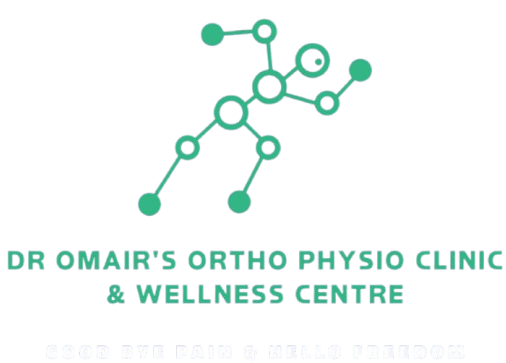Dealing with sciatica is no easy feat. It often involves sharp, shooting pain that can disrupt daily life. While this condition is challenging, there is hope. Exploring physiotherapy for sciatica offers a promising path to relief. Physiotherapy helps by tackling the root cause of the discomfort, offering a natural and effective method to improve your well-being. By focusing on exercises, stretches, and lifestyle changes, physiotherapy can play a crucial role in managing sciatica pain. Unlocking relief is possible, and it starts with understanding how physiotherapy can be part of your solution.
Understanding Sciatica & Its Impact
First, let’s dive into what sciatica really is. Sciatica refers to pain that travels along the path of the sciatic nerve. This nerve runs from your lower back through your hips, buttocks, and down each leg. You might feel numbness or tingling along with pain. This condition can result from a variety of causes.
One common cause is a herniated disc. This occurs when a part of the disc pushes out and presses against the nerve. Another possible cause is piriformis syndrome, where a small muscle in the buttocks irritates the sciatic nerve.
The impact of sciatica on daily life can be significant. Whether it’s sitting at a desk, walking down the street, or even lying in bed, the pain can be debilitating. It interferes with your work, social life, and overall productivity. Understanding these basics helps us appreciate why finding effective relief methods like physiotherapy for sciatica is crucial.
Why Physiotherapy is a Game-Changer
By now, you might wonder how physiotherapy specifically helps with sciatica. Well, physiotherapy for sciatica serves as a natural alternative. Unlike surgery or medications, it doesn’t involve invasive procedures or deal in side effects. Physiotherapy is built on scientific principles that support the body’s natural healing processes.
When dealing with sciatica, physiotherapists use techniques that involve both active and passive strategies. These strategies boost the healing process, reducing pain in the process. Through specific exercises, patients can strengthen their muscles, improving stability and reducing pressure on the nerve.
Beyond immediate relief, physiotherapy offers comprehensive pain management. By focusing on the whole body, therapists can work with patients to develop techniques that aid in pain reduction while supporting long-term health.
Comprehensive Physiotherapy Process: Assessment to Treatment
The journey of physiotherapy for sciatica begins with a detailed assessment. Every person is different, so it’s important to identify what’s causing your pain. By understanding each patient’s unique situation, therapists craft personalized treatment plans.
Once the assessment is complete, a tailored program is created. This plan is not just about stretching—it’s a balanced approach. It might include exercises to improve flexibility, strength, and posture.
The integration of both active and passive treatment strategies ensures effectiveness. Active treatments complement the more relaxed approaches to give a well-rounded experience.
Physiotherapists employ evidence-based interventions. This means they use techniques that have been proven through studies, ensuring high standards of care.
In summary, the comprehensive process involves:
- Assessment: Uncover the root cause of your sciatica.
- Personalized Plans: Tailor activities and treatments to fit your needs.
- Active and Passive Strategies: Balance dynamic exercises with more relaxed treatments.
- Evidence-Based Interventions: Rely on tried and tested methods.
Active Treatment Modalities for Sciatica Relief
Exercises play a vital role in treating sciatica. Strengthening your back and core can relieve pressure on the sciatic nerve.
Here are some common active treatment modalities:
- Stretching: This can help maintain flexibility, especially focusing on lower back and leg muscles.
- Nerve Mobilization: Gentle movements aid in reducing nerve tension.
- Low-Impact Aerobic Exercises: Such as walking or swimming, these help improve cardiovascular and muscular health.
- Proper Form Guidance: Ensuring you perform exercises correctly is key to avoiding further injury.
All these exercises are designed to gradually improve your pain situation and should be performed under professional guidance.
Passive Treatment Techniques & Pain Alleviation
Manual therapy techniques also have their place in the healing process. These are hands-on techniques performed by the physiotherapist.
- Heat and Cold Therapy: Helps manage pain and reduce inflammation.
- Therapeutic Ultrasound: Uses sound waves to help heal tissues and ease pain.
- Manual Therapy: Involves mobilizing joints and soft tissue.
Through these non-exertive methods, you can find comfort as they work at alleviating the tension in your body.
The Vital Role of Education in Pain Management
Education is another pivotal part of physiotherapy for sciatica. It’s not just about what happens in sessions but the knowledge you take away.
- Learn about correcting your posture to avoid further irritation.
- Understand ergonomic improvements to apply in daily settings.
- Identify and avoid specific triggers that could worsen your pain.
Knowing these elements empowers you to better manage your condition independently.
Real Results and Transformative Outcomes
Patience is essential because recovery takes time. Relief might happen gradually, improving day by day.
Expectations:
- Timeline: While some find relief quickly, others might take weeks or months.
- Success Stories: Many have seen significant improvements, regaining mobility and comfort.
- Long-term Benefits: Physiotherapy allows you to maintain progress and prevent recurrence.
Consistency in following the personalized plan is key to witnessing transformative outcomes.
Conclusion: Embrace Physiotherapy for a Better Quality of Life
In conclusion, embracing physiotherapy for sciatica can significantly alter the way you deal with pain. It offers techniques that are holistic and non-invasive, allowing for a better, pain-managed life.
If you’re suffering from sciatica, seeking professional aid is a step toward getting back on track. Don’t let pain control your life. Explore physiotherapy to manage symptoms effectively and regain control over your health.

